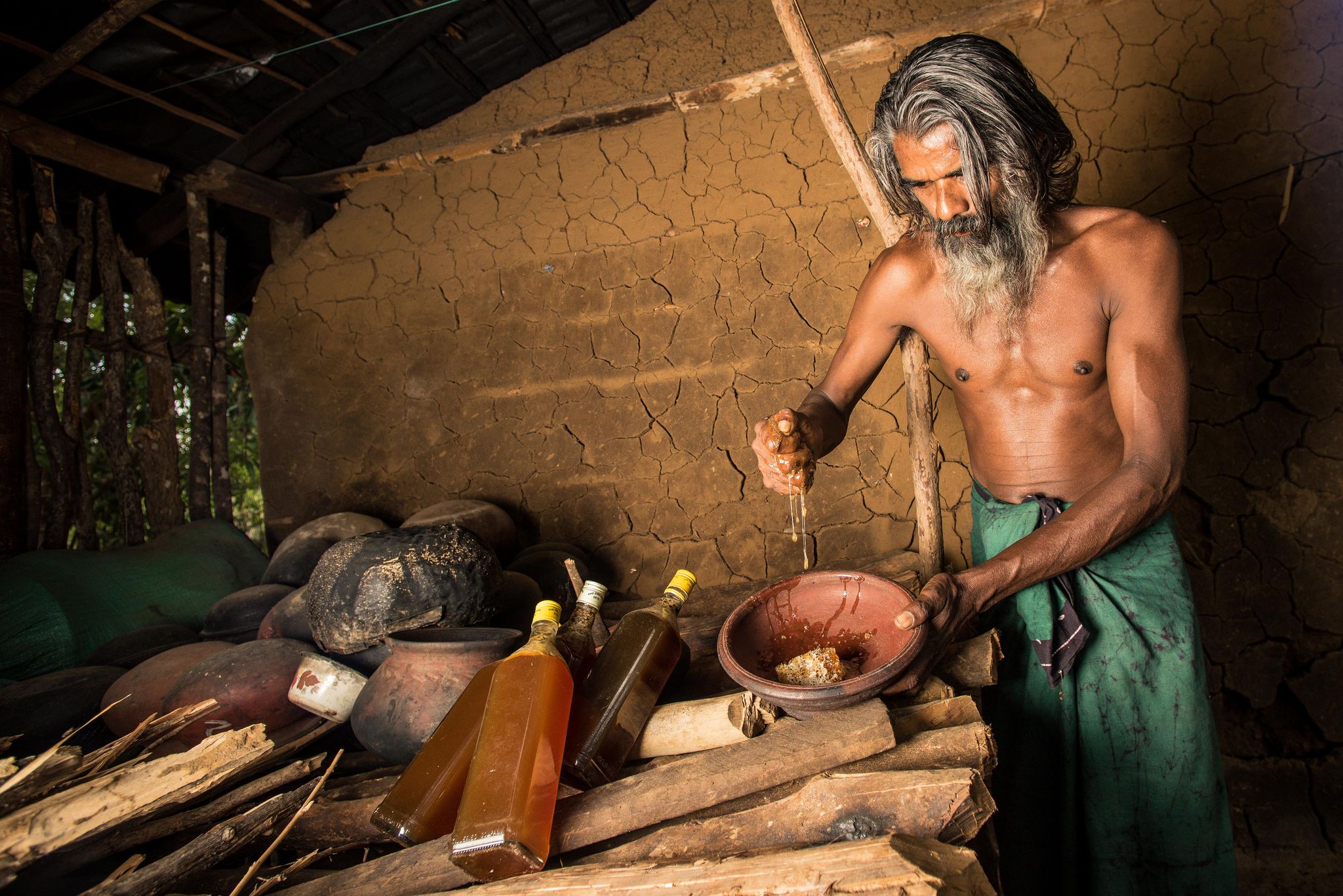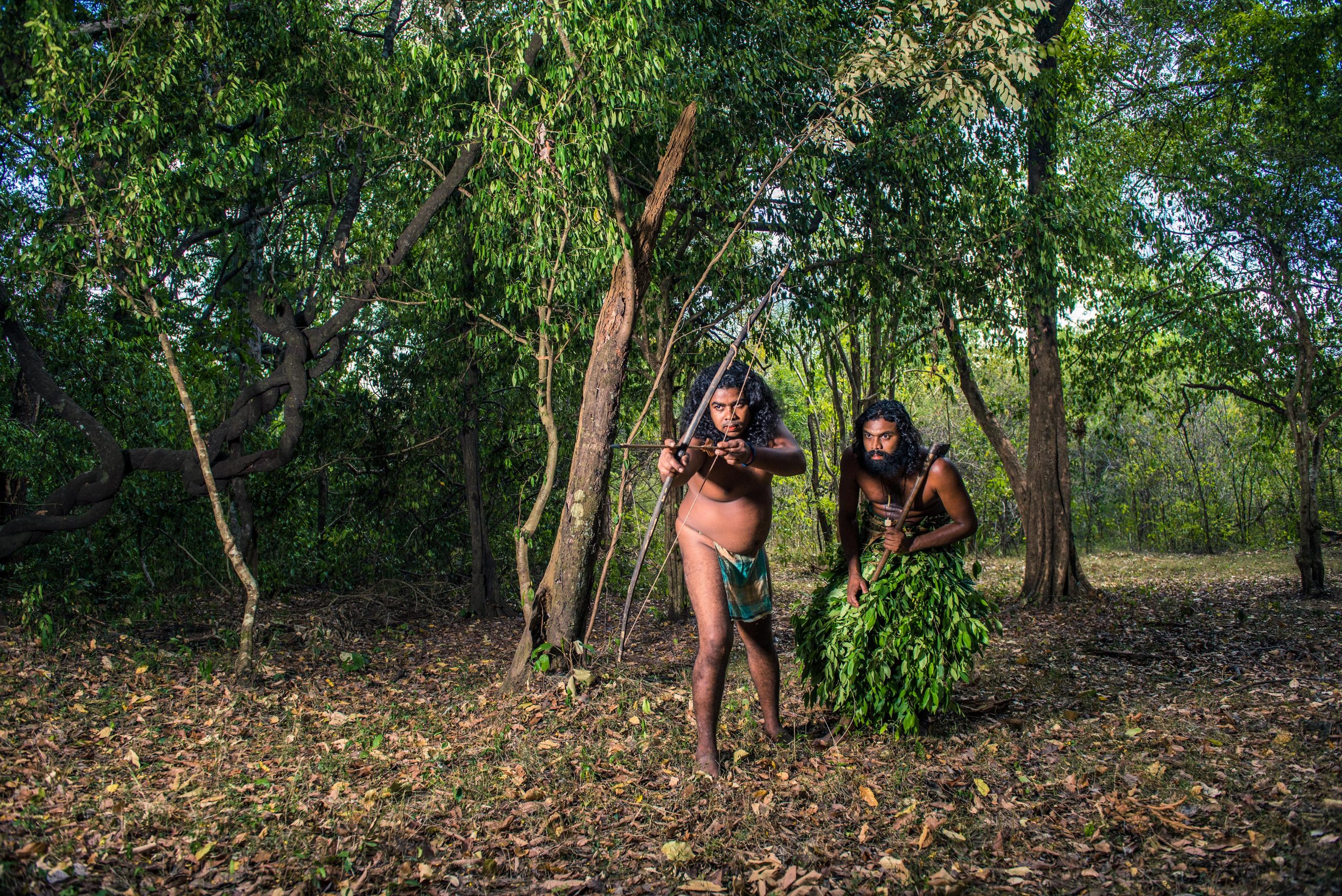
Supporting the first civilisation of Sri Lanka to stay alive
Sri Lanka was inhabited long before the Sinhalese or Tamils came. Our original inhabitants, known as the Vedda, are thought to have first arrived on the island some 18,000 years ago and are a minority indigenous group that is in threat of becoming extinct.
Tourism, both local and foreign, has impacted positively to sustain the Vedda community and to keep this intriguing prehistoric culture alive.
There are many tribes in various regions of Sri Lanka with the overall community leadership currently being held by 72 year old, Uruvarige Vannileetto, of the Vedda tribe, with his son, Gunabandila Etto, next in line. Even today, the main responsibilities of the hereditary tribal leader are for the overall protection of the tribe, to take decisions for their well-being, lead in all rituals, settle disputes and obtain benefits to the community when possible. By his side, you will see, Uruvarige has an axe which has been passed down from his predecessor and those before him; a tradition Gunabandila & family want to see stay for generations and generations to come.
The natural remedies Uruvarige sells from a traditional mudhouse with iluk leaf roofing, are famous across Sri Lanka. There are medicines to cure many types of ailments including joint pains, sinusitis, migraines, stomach problems, fevers, coughs, diabetes & cholesterol. After formal schooling (which is compulsory), children are often playing in the wilderness and collecting items such a tree bark, herbal flowers, forest fruits & roots. In addition to these and using oils, some cures contain elements from wild animals, such as bears and boars. As well as selling the medicines that are mostly oils and liquids, the tribal chief usually has delectable pure wild bee honey available, which is an excellent accompaniment to the local fresh buffalo curd.
During the rainy season, women of the tribe can be found working in the rice paddy fields and during the dry season, in the corn fields (both government owned), while the men are usually occupied with the more physically demanding tasks such as hoeing the soil after harvest and hunting. Throughout the year, traditional crafts are handmade, including bow & arrows, rings, necklaces and bracelets, with everything been carefully made out of forest trees, mainly ebony. These make great souvenirs and are usually under ten US dollars and much better than those in tourist shops and a good way to support the Vedda community directly.
While immersing oneself into the Vedda tribal culture, guests can also experience traditional songs & dances, bow & arrow target shooting, hunting styles and learn some of the main language, Vedhi, which was chronicled in the Mahavamsa over 2600 years ago, though is prehistoric.
For those with curious taste buds, a variety of the Vedda delicacies can be made available, such as coconut flatbread, wild meat, bee honey, corn and red rice.
Veddas’ main religion is animism, the belief that objects, places and creatures all possess a distinct spiritual essence with a divinity or supernatural being of nature. Their deceased are reborn as daemons in the forest and linger among us. In essence of this belief, the tribes people consider that to be able to to get rid of ailments, collect an abundance of the very best fruits & honey from the forest, and to avoid natural disasters, they need to present prayers and offerings to a pantheon of daemons, who are the guardians of the hills, streams, rocks, paths, water and forest.
Today, the Vedda have restricted access to these, their motherland. In creating National Parks, laws implemented against hunting of wildlife have adversely affected the tribes and despite having an allocated area, there are hunting constraints in place, and it is a struggle for the tribe to sustain a living in the limited area.
Opening up to tourism has been of support to the community and has reinvigorated the ancient culture. While commercialism of the tribe is a challenge, there is an understanding that a balance is required to
maintain authenticity in preserving their unique lifestyle and heritage, while enabling the younger generation to have the option to pursue the outside world. Many understand they have a big responsibility to take the Vedda legacy forward.
The village also has a museum that was built and now maintained with assistance from the Sri Lankan government. Despite being rather rustic, spending time in the museum prior to venturing in to the village, enables guests to get a sound understanding of the tribal history, details of past generations, such as what they used for hunting, how they built their houses, about marriage & death ceremonies and how they’ve adapted through the years. The modest entrance fee of RS 500 (approx. USD 2.75) goes towards maintenance and charity services that include helping buy school books, bags, shoes and other necessary accessories for the village children.
TTC work closely with a local partner who is joined by a translator-guide, with the tour being conducted in a very respectful and ethical manner.
The visit to the tribal village may feel rather staged, though keep it in mind that it’s contributing money in to the community and keeping the traditional culture alive, preventing it from completely disappearing.
#tribe #tribal #indigenous #minority #vedda #goinglocal #community #survival #offthebeatentrack #srilankatravel #travelsrilanka #authenticsrilanka #ttcsrilanka #thetravelconciergesrilanka
For further information contact TTC direct anz@ttcsrilanka.com
Write to us on sales@ttcsrilanka.com or call us on +94 71 116 1020
    |




